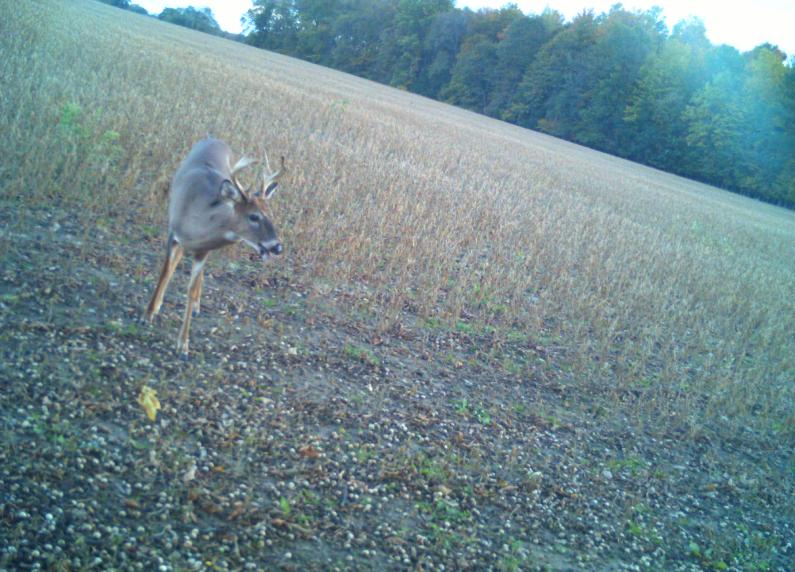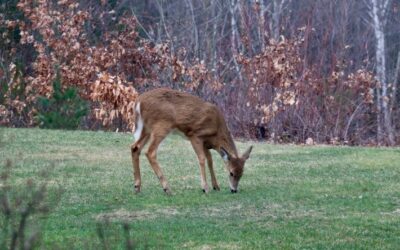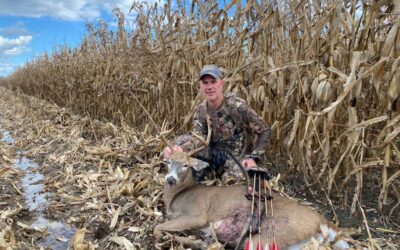I understand culling bucks or management bucks can be a controversially topic that is highly debated among hunters.
I am writing this blog post not to give guidance to anyone specifically rather educate everyone that I may reach. With the proper education, you can decide whether culling is right based on your own beliefs and what is best for the property that you hunt.
Definition of a Cull Buck or Management Buck
The official definition of a ‘cull or management buck’ is a buck that has inferior genetics to the other bucks in its age class.
Perspective on Culling Bucks
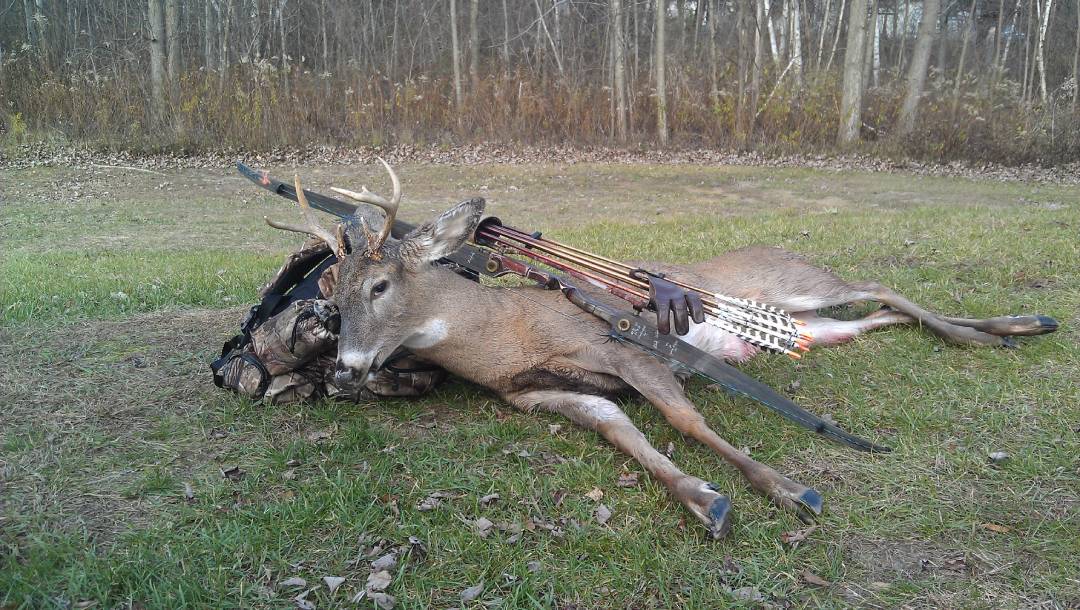
Some whitetail hunters would call this a cull buck. Others would call it a great buck to harvest. It all depends on your perspective. So before judging anyone, step back, and put their idea of a shooter buck into perspective
It is important to have perspective and understanding before going and judging someone else for shooting a cull buck.
A cull buck to one person’s property may be an absolute beautiful buck to another person’s property. It all depends on perspective.
Use this picture to the right. In my opinion that would be a great buck to harvest. He has nice mass and 7 points. However, to some people that buck may need to be given at least another year before becoming a shooter buck
Another perspective of a cull buck is whether a young buck can be considered a cull buck in such an early stage of his growth. In these cases, it really depends on if you want to shoot mature whitetail bucks or if you want to shoot high-scoring whitetail bucks. We will dive into culling younger bucks in a little bit.
The other perspective that you should consider is what science says. Numbers never lie and as hunters that want properly manage our properties, we must take into consideration the numbers and make a logical plan for our property.
Table of Contents
Definition of a Cull Buck
Perspective on Culling Bucks
The Culling Debates
What Is a Cull Buck/a Walker Buck/a Shooter Buck
What about Culling Spike Bucks?
Quality after Culling Bucks
Why Culling Bucks May Not Work
Management Objectives
My Opinion on Cull Bucks
Conclusion
The Culling Debates
The term of a cull buck is a new term to me, but the idea of a management buck is not new to me. In fact, my father, my uncle, and I have had some heated debates ourselves about shooting deer as management or cull bucks.
The origin of the debate
It all makes sense to the inexperienced hunter that wants to create a plan to produce more shooter bucks on their property; however, when thinking deeper into deer genetics and how they spread it is not as simple as shooting all the smaller bucks.
So, I imagine that the debate started when a hunter one day said look at this buck, I shot it to get bad genetics out of the herd. Then, another hunter decided to think deeper and start to ask questions about if that was an effective way of getting better genetics into the herd.
Why is this debate such a hot topic?
As whitetail deer hunters we all dream of shooting a monster deer every season. With that in mind, it is the most logical solution to come up with strategies to give yourself the best possible chances to shoot the biggest buck.
Many hunters have differences of opinion when it comes the culling bucks on a property. Just like politics, everyone feels as if their ideas and opinions are the truth.
This is just not the case though. Every property needs its own strategy and what may work for a 1000-acre property may not work for the 100-acre property.
I hope to inform you on both sides of the debate and give you the best knowledge to make the best decision for your own property.
What Is a Cull Buck / a Walker Buck / a Shooter Buck
In this part of the post, we will be going through all the types of bucks (except a spike) You will also notice that I do not use points to decide what kind of deer is a management, walker, or shooter buck because points are relative to the property that you hunt. Also, I believe that maturity in age is a truer measurement of hunting a trophy buck.
These mature bucks are smart and elusive. This is what makes them so hard to hunt and kill. It really has little to do with the size of their rack. The rack size is just a testament of growth sometimes because as a deer gets older and grows, so does their rack.
A Cull Buck
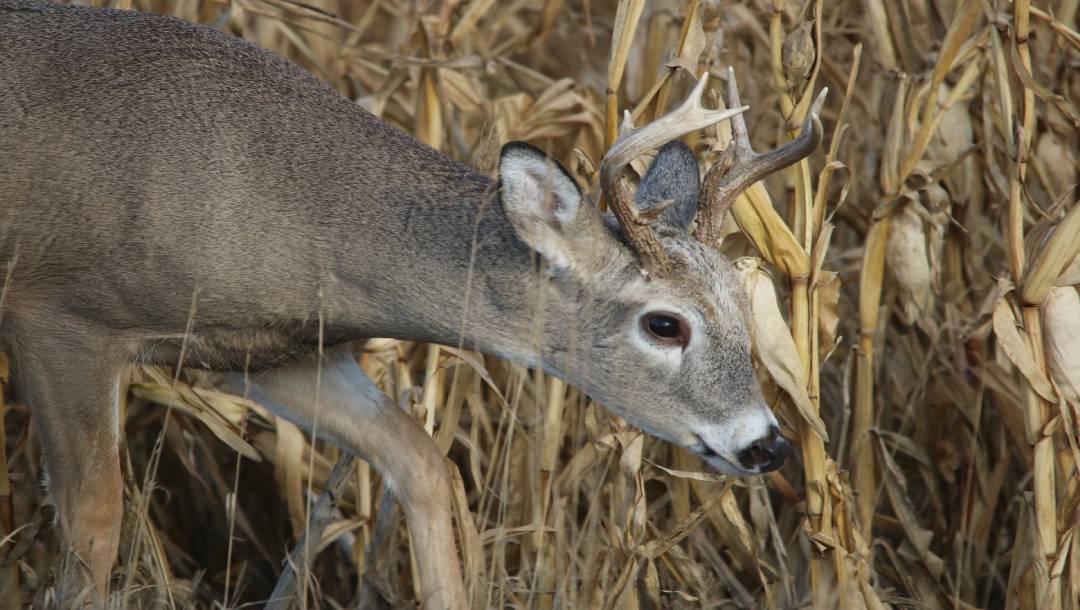
This may be considered a cull buck on some properties. I think it is worthy of being classified as a cull buck. However, make your own judgements for yourself.
I want to remind everyone that the definition of culling bucks is the act of shooting bucks that have inferior antler genetics based on the average size of antlers based on age.
For example, a cull buck would be a buck that would have only 6 points at age 4 ½ when all the other bucks that are 4 ½ have 8 or more points. This is just the premise for a very basic example.
The buck in the scenario above would be considered a cull buck because he has reached the age of full potential for antler growth. This means that there is a small possibility of this buck gaining more points in the years to come. Rather, he will probably gain more mass in the years to come.
Why is 5 ½ the age of determination?
Studies have shown that after the age of 4 ½ – 5 1/2 the chances of antler growth are less likely. Although it is possible for the buck to gain more points, it is more likely that the buck will gain mass and not points to his rack.
Any age after 5 ½ is a safe time to make a proper decision on a buck. If you shoot too early you will never know if that 3 ½-year-old would have turned into an absolutely beautiful trophy buck in the years coming.
Any deer younger than 4 ½ still has an opportunity to grow in both mass and points. This is important because you want to make sure that good genetics get passed down the most. If a young buck that was not nurtured properly due to bad crops, low water levels, or extreme cold, may still have good genetics. However, while he was young, he did not get the opportunity to show his full potential.
A buck that you should let walk.
Bucks that you should let walk are bucks that have shown great potential all throughout their life and are just now reaching the prime age of 4 ½ which signifies the maximum growth age. Now you may want to let this great 4 ½ and 5 ½ bucks walk to give them the opportunity to gain more mass and possibly more points. Which will result in a better scoring of said buck.
If these beautiful bucks survive the winter and other hunters, you will have a trophy buck on your hands that you can chase. Therefore on T.V. and YouTube, you hear a lot of big-name hunting channels mention that the buck is 4 ½ and he will be a great shooter in a year or two. They can do this because they have enough property that they feel comfortable with the odds that the buck will be back next year.
Shooter Bucks
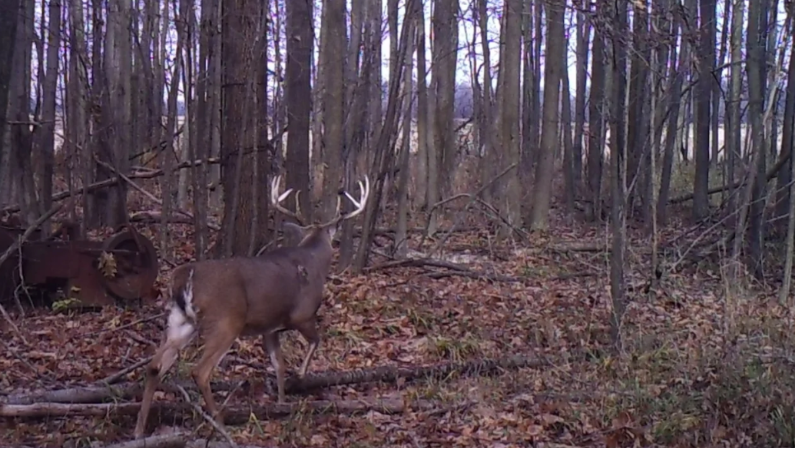
This whitetail buck is full mature and is an absolute toad! Definitely a shooter. (I would be shaking like a leaf if this buck walked in front of me)
A shooter buck is generally any buck that is 5 ½ or older. These are the bucks that have become the mature bucks on your property. We all hope that the mature bucks have great antler mass and many points; nevertheless, a mature buck might be a 6-point that has survived many winters and predators throughout the years. They may have even ducked some arrows in their lifetime.
These mature deer are the hardest and most fun to hunt. It takes hard work, dedication, and time to have everything come together. It all pays off and the satisfaction is worth all the sacrifices.
Shooter bucks are what all hunters are truly chasing and are what makes the sport so addicting.
What about Culling Spike Bucks?
While I was doing research specifically on culling bucks, I learned that it is also a common practice to cull spikes.
Spike bucks are a very interesting group of deer because they have not yet hit the peak antler growth age of 5 ½. Yet, there are still signs of bad genetics in some cases.
However, a good buck that has the potential of having a big rack should be past the phase of spike within a year or two. With that, you should be cautious and make sure that the spike has lived long enough, and you have given him time to grow his antlers and he has not performed.
If the antlers of the buck have not grown past a spike in the first two years, this may be a great opportunity to get him out of the gene pool.
6. Quality after Culling Bucks
If you believe that culling bucks are a good way to produce bigger antlered deer, then it is plausible to look at the scientific evidence. The proof is in the science as I stated above.
“However, is culling bucks a practical management practice in a wild, free-ranging deer population? The Noble Research Institute wildlife staff does not believe it is appropriate in most free-ranging deer herds for the following reasons:” – study done by noble.org https://www.noble.org/news/publications/ag-news-and-views/2010/october/culling-bucks/
So according to these studies, after years of culling bucks, it proves that bigger deer were not seen based solely on culling bucks.
In fact, in the wild many bucks that did not seem to have the brightest future ended up becoming great trophy bucks. This is also true in the opposite scenario. A promising young buck did not become a trophy buck but rather an average mature buck.
This has to do with more than just managing the older bucks.
Why Culling Bucks May Not Work
Culling bucks is not always the best option for generating bigger bucks on your property. It is because antler growth is determined by many factors and not just genetics.
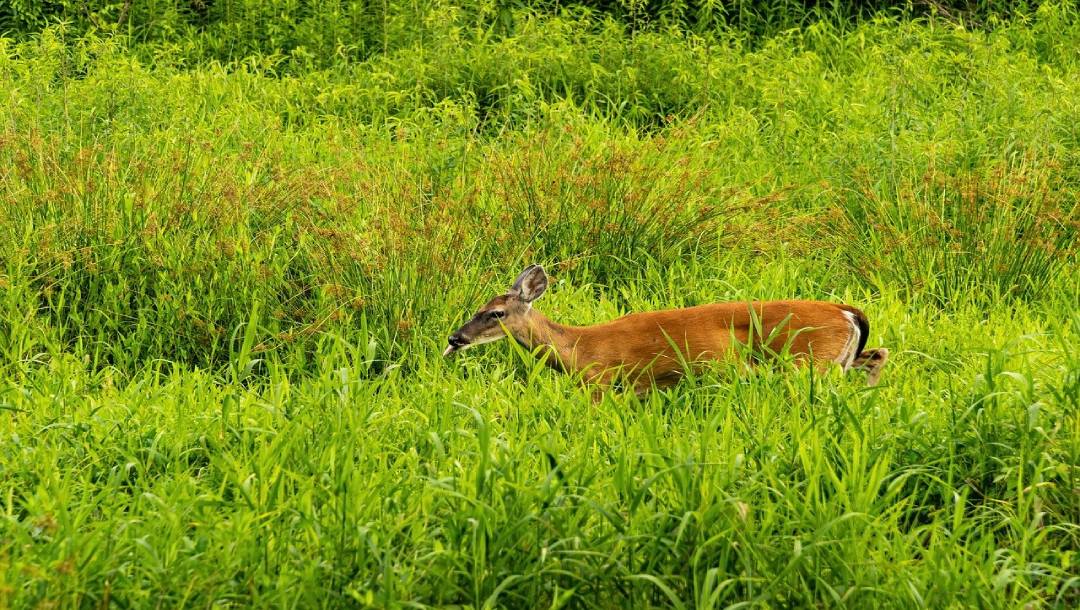
Bucks only play 50% of the role in whitetail deer genetics
Genetics
I want to start with why shooting management deer or cull bucks after age 4 ½ or 5 ½ may not actually improve your buck quality.
These bucks have been breeding does for over 3 years and have already passed their genetics down to other fawns and younger bucks on your property.
It is like a never-ending cycle of shooting old bucks with small racks just to have more old bucks with small racks.
Do not forget that a buck only has 50% of the genetics to create a male fawn. The female or doe also plays a 50% part in the deer’s genetics. Even if you shoot bucks with smaller racks, the female that is on the other end of the equation may be the deer that is passing the smaller antlered genetics to the fawns.
Nutrition also plays a huge part in the antler growth of a buck.
The amount of protein that a deer has along with the energy levels of a deer has a big effect on the buck’s antlers.
Nutritional sources may be a better investment of time for you to create bigger bucks than trying to shoot cull bucks every year. I am currently using Big & J Headrush for a mineral and attractant hybrid. This will give the bucks better resources for antler growth and also help the does have better health and a higher fawn survival rate!
Nutrition can be somewhat expensive and not possible for everyone; however, keeping the deer herd properly managed can be a great way to ensure that each deer gets a healthy amount of protein.
Management Objectives
What your management plans for each of the properties that you hunt will play a big factor if culling deer is a good option for you.
For example, if you just want to chase big racked bucks, then culling is most likely for you. You may need to implement a good food plot for antler growth as well.
On the flip side, if you want to hunt mature bucks that are old and smart, culling probably is not for you. You should let as many bucks have the chance to survive.
My Opinion on Cull Bucks
So, after all the extra research I have done and taking in the knowledge I have gained and shared, here is my own opinion.
It depends on what will work best for your individual property. Personally, I hunt on land with farm fields and 72-acre woods. This would mean that culling bucks are not the best option for me.
With the number of hunters on neighboring properties, it is hard enough to consistently see and hunt mature bucks.
In my opinion, chasing a mature whitetail no matter the antler size is what makes hunting challenging and rewarding. I would rather chase an old, smart, and sneaky 7 ½-year-old 7 points than chase a 3 ½-year-old 10 points. I would want to let that deer grow into a mature buck and specifically hunt him in a few years. (Do not get me wrong, a 3 ½-year-old 10 points would be considered a shooter buck if he gave me a shot)
I also want to be able to hunt more mature bucks which means that shooting young spikes is not beneficial to me. The fewer bucks in general; the less mature bucks later.
What I think about spike bucks that are 2 ½ or older
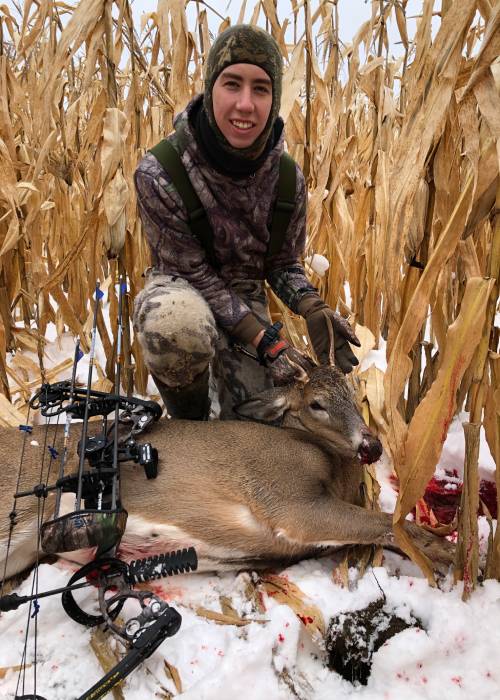
I think that if a buck is 2 ½ years old and is still a spike, it is healthy to get them out of the herd and into your freezer. This will stop them from further diminishing the good genetics. I say this because if by 2 ½ the buck is still a spike then there is a small chance of him becoming a large mature buck. He will most likely never have more than 6 points.
If it were up to me, I would want to see an antler restriction of 4+ points on one side. This restriction would only be placed on tags of hunters over the age of 17. This would allow for younger hunters to shoot smaller bucks along with bucks that some would consider a cull buck. I would hope that this would improve the mature buck levels in Michigan and still give young hunters the chance to fall in love with the sport just as I have.
Conclusion
Whether culling bucks on your property is a practice that you agree with or not, you should be respectful of other hunters’ opinions. If they want to have a genuine conversation, share the facts with them and state your own opinion. However, let them choose what they feel is best for their own property. This way the other hunter will be informed and be able to make their own beliefs. Then just see what happens for them in 3 or 4 years.
I want to just state again that all this information that I have presented with you is not to be taken as judgment. It is rather specific facts and my own opinions. Every whitetail deer hunter can make their own opinions and decisions based on their knowledge.
I hope this post helped you gain some knowledge on the topic of culling bucks and if it is right for you. Comment down below if you like the culling strategy or not and why.
Thank you guys for visiting The Whitetail Teacher! If you enjoyed this post make sure to share it with a friend.
Join the Hunters of America Discord Server to become a part of the only hunting discord community.
You can also show support by going over to the socials listed below and giving me a follow. I appreciate it and it helps keep spreading the love for Whitetail Deer Hunting.
If you have any questions or recommendations for new blog posts, please email me and I will respond as quickly as I can: Loganpetzold@thewhitetailteacher.com
Learn, Plan, Execute,
The Whitetail Teacher

